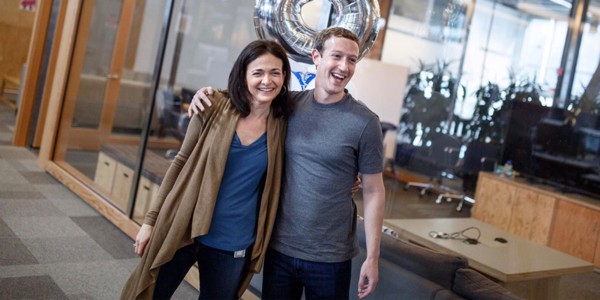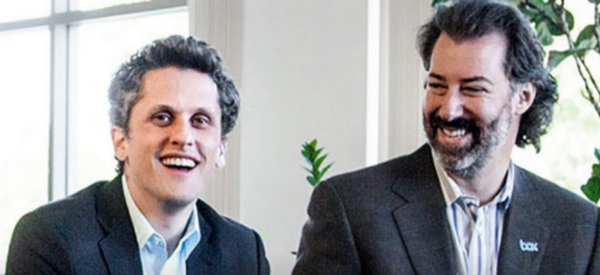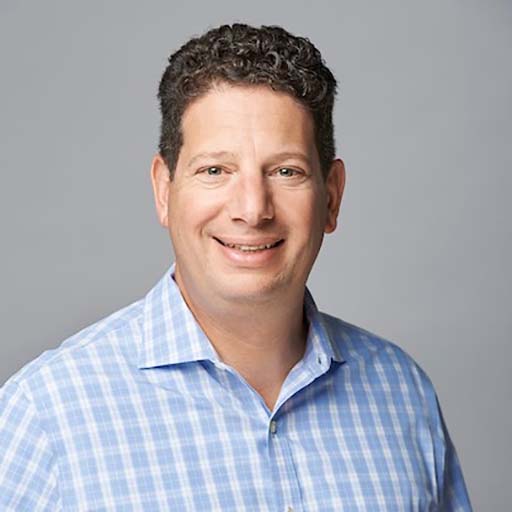Over the years — as an operating executive, angel investor, board member, and now a VC at Sapphire Ventures — I’ve enjoyed being a sounding board and advisor to dozens of amazing startup CEOs. A common topic that CEOs want to discuss is how to level up their organizations when they’re experiencing hyper growth. Often, that means figuring out whether they should hire a COO, and if so, making sure they find the right fit.
As a former COO who joined Trulia as an outside hire, I know first-hand that this is an important and nuanced topic. In the right situation, adding a COO can give a CEO a powerful partner in transforming and scaling her company. But hiring a COO at the wrong time, or hiring the wrong person, can be a costly — or even fatal — mistake.
In this post, I’ll help CEOs think through five critical parts to hiring an outstanding COO to level up their organizations.
1) Hire a COO when things are going well, not as a fix
If your startup is struggling to gain traction or growth has slowed, adding a COO likely won’t solve the problem. Establishing product-market fit and starting to scale are your first priorities, and if you haven’t achieved these and are failing to lead your team through a stagnant time, your company needs stronger medicine than an outside COO.
As an early-stage founder/CEO, you need to fix what’s wrong yourself. If you’re not up for the grind of execution, you should take time to consider whether being CEO is right for you and your company in the first place. Startup CEOs need to be hands-on for many years — if not forever — and a culture of strong execution and attention to detail must be established from the top of the company down.
Hire an outside COO to fan the flames — not start the fire itself. A good time to add a COO is when your company is exploding with growth, and you need a partner to capitalize on a ballooning list of opportunities. This happens as you add more product lines, address new customer segments, and push into new geographies. At this point, a COO can bring real leverage and accelerate what’s working.

Paul Levine, Pete Flint
As COO at Trulia, I joined a company that had a large consumer audience and recently hit $20m in revenue. The company’s employee base was doubling year-over-year, and growing revenue was becoming a primary focus. Pete Flint, Trulia’s co-founder and CEO, was sharp on vision, product strategy, audience, and company culture but was searching for support growing revenue and scaling the organization. These were two of my core skill areas, and I was able to complement Pete and partner with him for the next leg of the journey — from private company to IPO to eventual multi-billion dollar acquisition by Zillow.
2) Seek out complementary skills
Typically, a COO will bring skills and experiences that complement those of the CEO. In places where the CEO is weaker or less interested a COO can add fluency and dedication. Maybe the COO is an industry veteran who knows the market well or has made a name for herself in hiring and retaining talent and managing large organizations. Figure out your gaps and look for someone to help fill them.

Sheryl Sandberg, Mark Zuckerberg (Mark Zuckerberg’s Official Facebook)
Sheryl Sandberg’s partnership with Mark Zuckerberg is perhaps the canonical example of a complementary COO. Sheryl joined Facebook in 2008 when it was just four years old and experiencing exponential growth. The company was beginning to focus on revenue to realize the stratospheric $15 billion valuation Microsoft had bestowed on them the prior year. Sheryl’s track record driving Google’s sales and ops and her 15 years’ experience were a perfect balance to Mark’s product vision and youth. At Facebook, Sheryl built the sales and revenue ops team and steered 260 employees from a young, relatively immature organization to a public company, deep with talent.
Hiring Sheryl allowed Mark to channel his efforts into Facebook’s product, with resulting breakthroughs such as the News Feed, Facebook platform, mobile, and Messenger. Facebook’s results — 2 billion users, $40.7 billion in revenue, and its current $400+ billion market cap — speak for themselves.
3) Remember: this is different than a VP hire
While CEOs often lean heavily on and entrust VPs with significant portions of the business, in most cases CEOs hire a COO to take on broader leadership responsibilities and be a true partner in building the company. Because of this, hiring a COO is higher-stakes than hiring a VP. Mutual trust, alignment on vision, and personal chemistry are just as important in hiring a COO as they are in selecting a co-founder. You and your COO will spend late nights and weekends working through the thorniest issues facing the company. In challenging times, you’ll have to get creative and project confidence to the rest of the team. And when things are going well, it’s helpful to have a foil, so you don’t rest on your laurels.

Aaron Levie, Dan Levin (Box)
At Box — a Sapphire Ventures portfolio company — founder/CEO Aaron Levie hired Dan Levin into a very senior, expansive COO role early in the company’s history. Dan became the de facto general manager of the Box business, leading go-to-market, operations, and many functional areas. This freed Aaron up to focus on Box’s product and culture, the things he cared most about and felt uniquely qualified to lead. A large portion of Box’s executive team, including several VPs, reported to Dan, and the two worked side-by-side to drive many of the company’s major initiatives.
When hiring a COO into an expansive role as Aaron did, it’s important to seek out experience, but you don’t want someone who’s so entrenched in their ways that they aren’t flexible enough to adapt to a new situation. Every startup is unique. The best COO will be able to draw on their prior successes yet be creative and flexible enough to try new things where solutions don’t yet exist.
4) Know your potential COO’s goals
A final important fit factor is to assess a COO’s aspirations. Unless you’re looking to replace yourself as CEO, your COO should be happy to stay in his or her role — and not see it as a stepping stone to replace you as CEO. All of the examples discussed so far — Pete and I, Mark and Sheryl, and Aaron and Dan — were stable multi-year relationships, built on common expectations, mutual trust, and respect.
Two other exceptional duos to learn from are Yelp’s Jeremy Stoppelman and Geoff Donaker, and Intercom’s Eoghan McCabe and Karen Peacock.
Geoff Donaker, Jeremy Stoppelman (Getty Images)
At Yelp, Geoff Donaker joined very early in the company’s evolution, and became COO the next year. As Yelp’s tenth employee, Geoff played a crucial role in keeping the company focused and on-task in its exciting yet fragile state and built a powerful local advertising business that multiplied growth exponentially. Geoff oversaw Yelp’s revenue strategy from inception to generating $700 million. Geoff remained Jeremy’s powerful #2 for over ten years and played a massive role in the company’s success. By 2016, employees numbered 5,000, and Yelp was a public company.
Karen Peacock, Eoghan McCabe (Intercom)
At Intercom, Eoghan McCabe brought on Intuit veteran Karen Peacock last year, after their Series C. Eoghan and Karen spent five months getting to know one another before starting to work together professionally. This was largely due to Karen’s firm belief that it was important to align on values, figure out one another’s skill sets, divvy up tasks, and set clear expectations for handling disagreements. If you’re “oil and water,” in Karen’s words, “you’ll start pulling the company in different directions.” Defining and settling on roles that work for both parties early on has allowed this formidable CEO/COO pair to stay on track when things took off.
5) Use your network to find the best match
Given the above, hiring a COO should be network-driven. Chemistry and alignment are indispensable, and it may take you many months or even years to find the right person. Once you do find your “other half,” the benefits are well worth it. Because finding a true partner, who supports your vision and balances your personality and working style, is far more important than hiring someone with the right resume, CEOs should leverage people who know them best in the workplace for advice and introductions. These might be investors they have closely collaborated with, or peer founders.
In an extreme case of network-driven, long-term CEO-COO dating, Pete Flint and I met 4 years before I joined Trulia as COO. A mutual colleague at Accel introduced us, and initially I was a reference for one of Pete’s early hires. We continued to meet up regularly and were able to get to know each other over several years. When Pete was ready to hire a COO, we already knew the fit was right. In Pete’s words, “the connection to finding your COO is likely closer than you think.”
To summarize, when you’re vetting COO candidates, look carefully for the following:
- Do they share your vision and values for the company?
- Do they have complementary prior experience, including knowledge of new tools and processes, to scale your company?
- Is this someone you can learn from?
- Are they willing to share and teach to help everyone improve?
- Will they be able to recruit, hire, and retain the best talent for the areas they focus on?
- Do their personal aspirations align with your vision for the role?
You’ll want to meet a wide range of candidates to help you calibrate and decide what you’re really looking for. Remember that there is no single framework for hiring a COO. As with any key position at an early stage company, much of it comes down to chemistry and a mutual understanding and commitment to what the future will look like. Give weight to a resume — but don’t underestimate your gut.
Note: thanks to Pete Flint, Geoff Donaker, Karen Peacock, and Aaron Levie for reading drafts of this.



